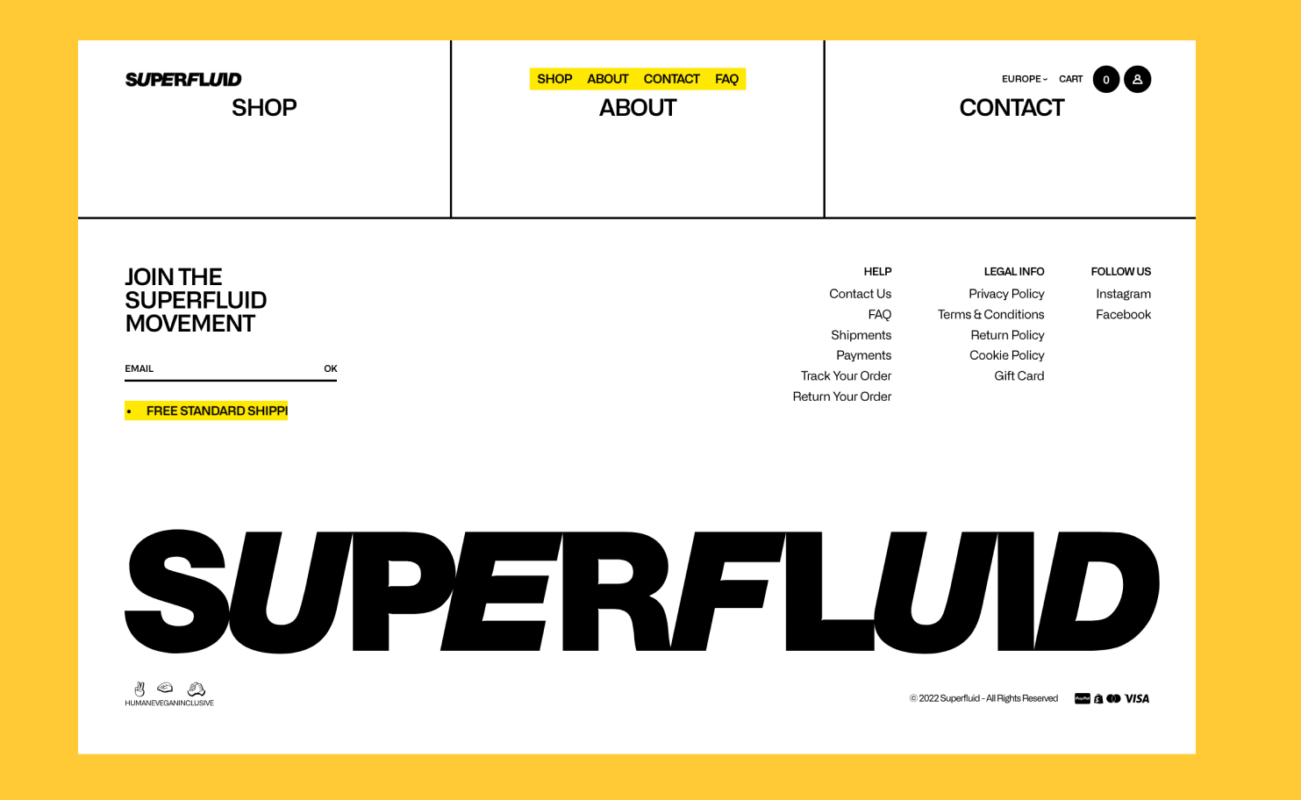Looking to craft a web design footer that’s not just practical but also turns heads? A footer is more than a decorative element—it plays a vital role in navigation and credibility. According to Nielsen Norman Group, users often scroll to the bottom for key links or extra details, making this section crucial for engagement.
A well-structured footer shapes how users perceive your brand and interact with your site. Beyond looks, it delivers key links, contact details, and trust signals that enhance user experience and SEO, all while keeping the site’s visual flow consistent.
Key Takeaways:
- A well-designed footer improves navigation, boosts brand credibility, and enhances user trust.
- Strategic placement of legal links, social icons, and resources helps improve user engagement.
- Clean layouts with clear typography create a footer that supports—not distracts from—the main content.
- Reviewing real web footers provides practical ideas to inspire your own design strategy.
What Is a Footer in Web Design (and Its Role)?
In web design, a footer is the bottom section of a webpage, typically built using the HTML5 <footer> element. It remains consistent across all pages and serves as a reliable space for information that users often look for after reaching the end of the main content.
Here are the main functions of a footer in web design:
- Navigation support: Provides secondary links to important pages like About, Contact, or Privacy Policy.
- Brand presence: Displays branding elements such as logos or taglines to reinforce identity.
- Trust signals: Includes copyright notices, security badges, or awards to build credibility.
- User connection: Offers contact details, social media links, or newsletter sign-up forms to foster engagement.
- Enhanced usability: Keeps key resources accessible and improves overall site navigation.
10 Best Web Design Footer Ideas for Modern Websites
Here are ten standout footer web design examples that showcase how to blend aesthetics with usability for an optimized experience.
1. Lorelei Londres
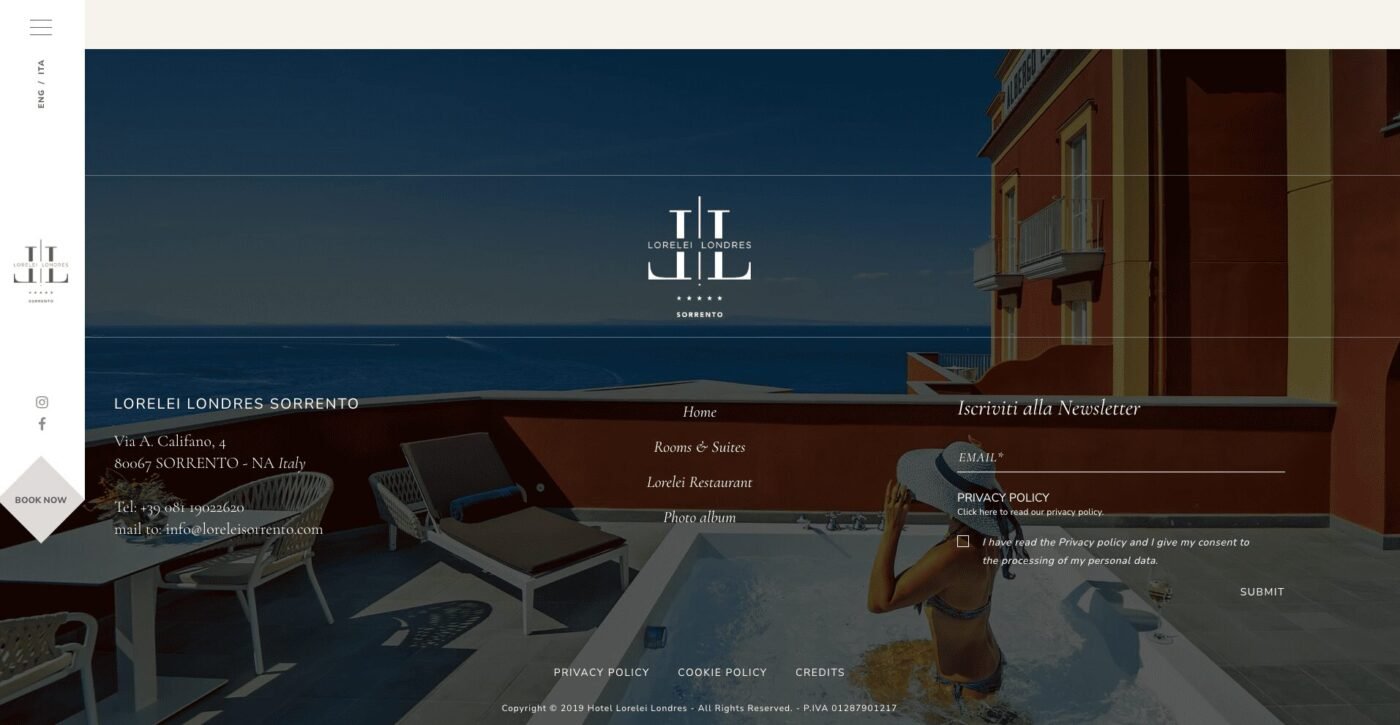
Luxury footer design with elegant typography and minimal navigation | Source: Lorelei Londres
Lorelei Londres’ website uses a rich, multi-column footer with elegant typography and imagery. Navigation is neatly organized, while social icons and booking options are placed strategically for quick action. This design consistently balances luxury with clarity.
2. Drunk Elephant
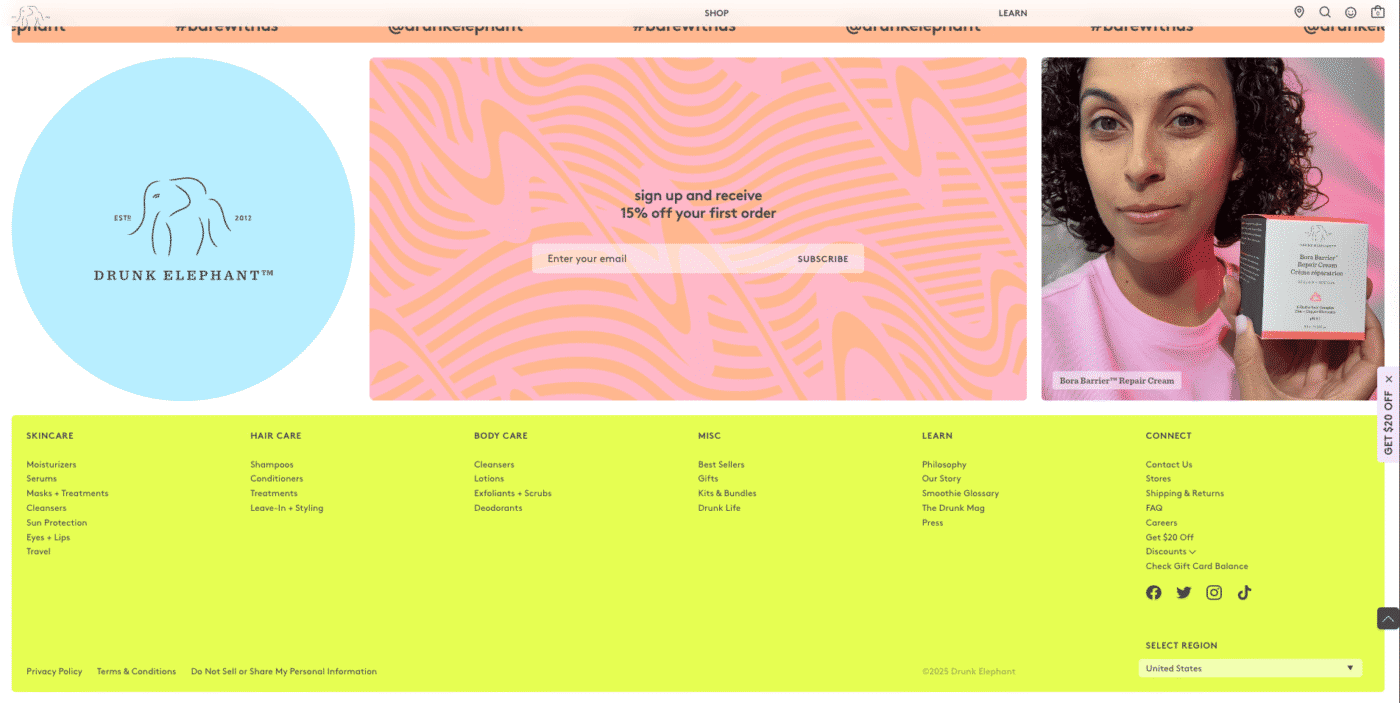
Colorful website footer by Drunk Elephant | Source: Drunk Elephant
Bright colors and bold typography make Drunk Elephant‘s web footer playful yet functional. Product categories, company links, and legal notices are set in clean columns. Moreover, social icons and a clear email subscription form boost engagement while showcasing brand personality.
3. L’Oréal Paris
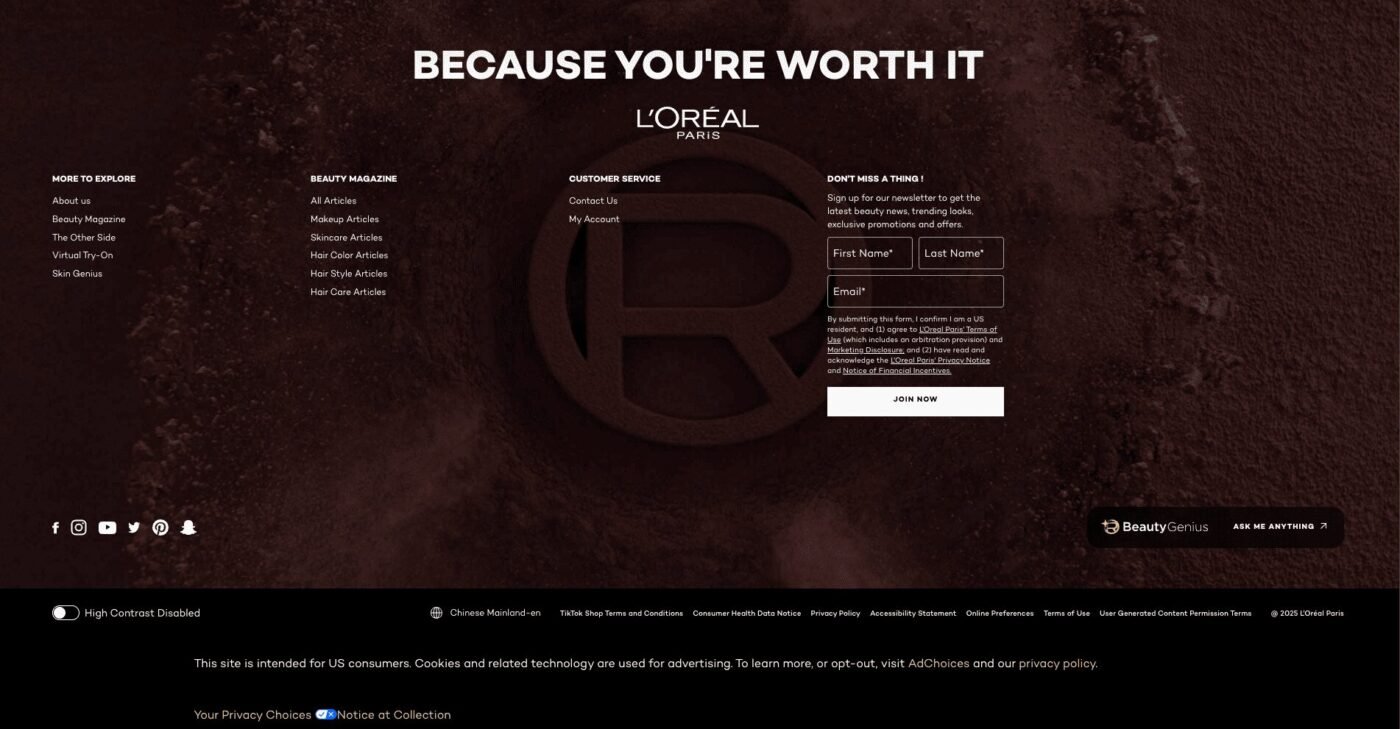
Footer website of L’Oréal | Source: L’Oréal
L’Oréal’s sleek footer offers quick access to product ranges, brand info, and beauty resources through well-structured columns. Newsletter signup, social integration, and legal links reinforce trust, accessibility, and the brand’s premium image.
Furthermore, the tagline ‘Because You’re Worth It’ strengthens emotional connection, reminding users of the brand’s empowering message while reinforcing trust and loyalty.
Also Read : 11 Interactive Website Examples That Inspire Creativity
4. gOOOders

Minimal footer design with strong branding | Source: gOOOders
As a fashion brand, gOOOders incorporates its footer with bold typography, clear hierarchy, solid calls-to-action, and a balanced layout that reflects sustainability values. Newsletter signup, social links, and a simple menu make engagement easy while strengthening brand identity.
5. Spline Group
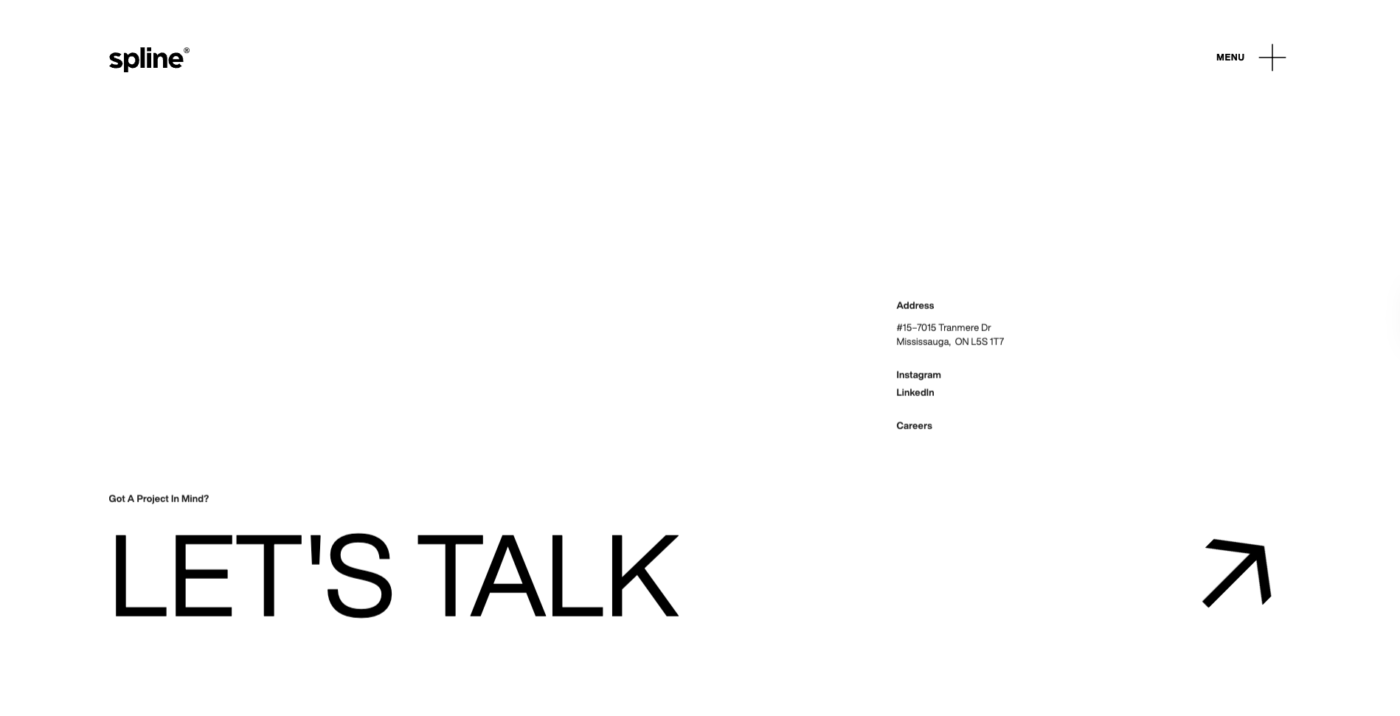
Spline footer example | Source: Splinegroup
The Spline Group web design footer is modern, minimal, and professional. It integrates location details, contact forms, and social channels without feeling cluttered. Simple typography and monochrome colors emphasize a clean, contemporary look.
A clear call-to-action inviting collaboration or inquiries further shows how a minimalist footer design can support lead generation effectively.
Also Read : How to Build an Interactive Website in 10 Steps
6. Buffer
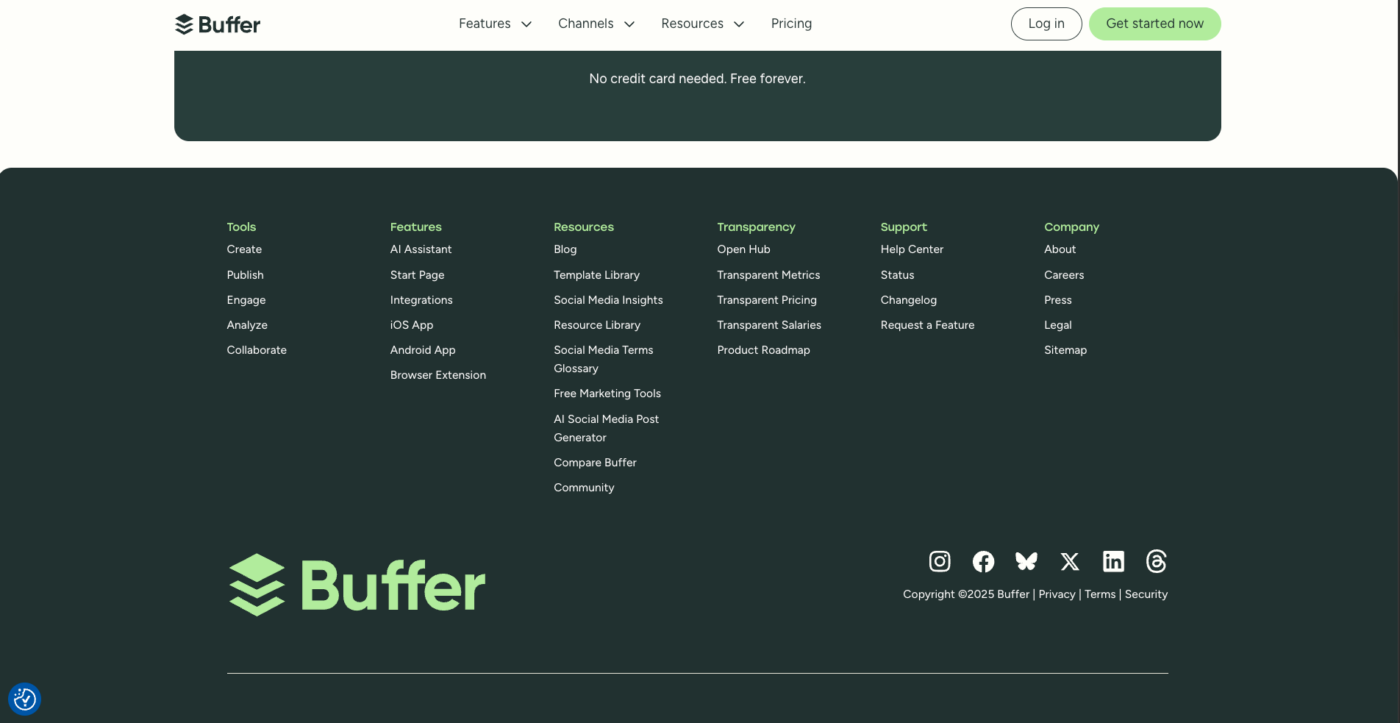
Simple footer with organized navigation | Source: Buffer
Buffer’s footer organizes content into clear categories like Resources, Company, and Tools. Its clean, minimal style supports quick scanning while reinforcing the brand’s user-friendly identity. Social links, a blog section, and resources make it a practical navigation tool.
7. Art4web
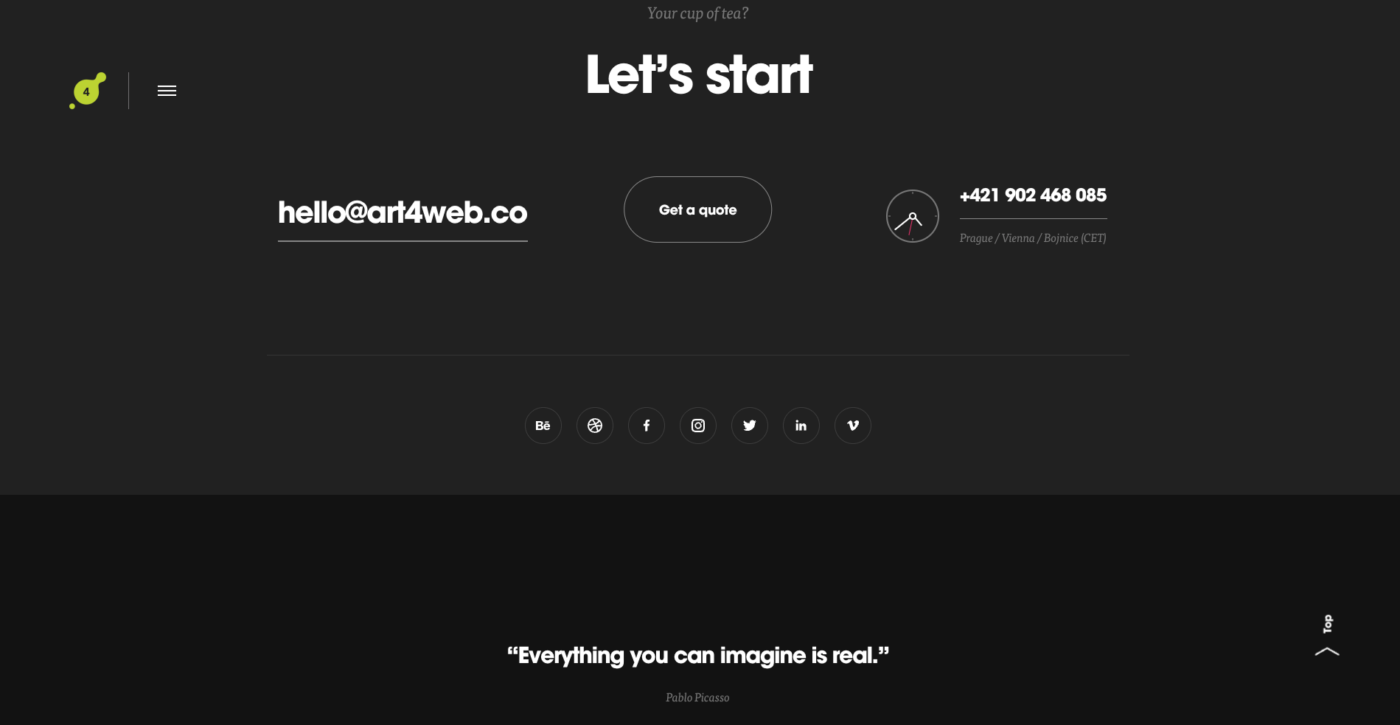
Creative footer with dynamic layout | Source: Art4web
As a creative agency, Art4web uses an artistic footer design with bold visuals and playful typography that captures attention. It aligns perfectly with the agency’s branding and creative philosophy.
Despite its generous use of whitespace, the footer still provides key links—CTAs, contact options, and social media—prioritizing clarity over decoration.
Also Read : 15 Inspiring B2B Website Design Ideas to Learn From
8. Tenzotea
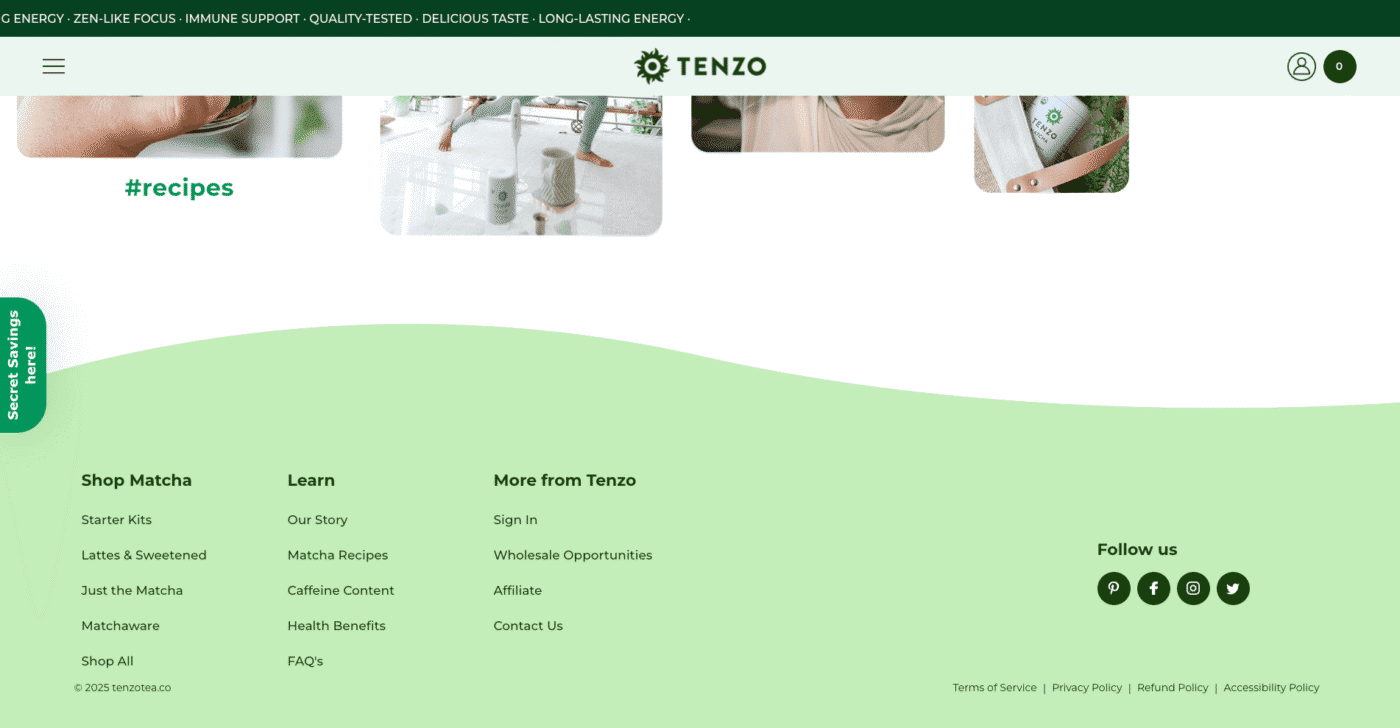
Simple but modern footer by Tenzotea website | Source: Tenzotea
Tenzotea’s web design footer uses clean typography and a white-and-green palette that mirrors its organic theme. Key links like shop matcha, brand story, and social media are presented in a unified, inviting layout that highlights the brand’s personality.
9. Squarespace

Professional footer example showcasing design tips and structured links | Source: Squarespace
Squarespace’s footer impresses with its comprehensive details and clear, open design. It provides easy access to essential information such as company details, policies, help center, and legal resources. This structured approach ensures users can conveniently find everything they need without friction.
10. Awwwards Best Practices
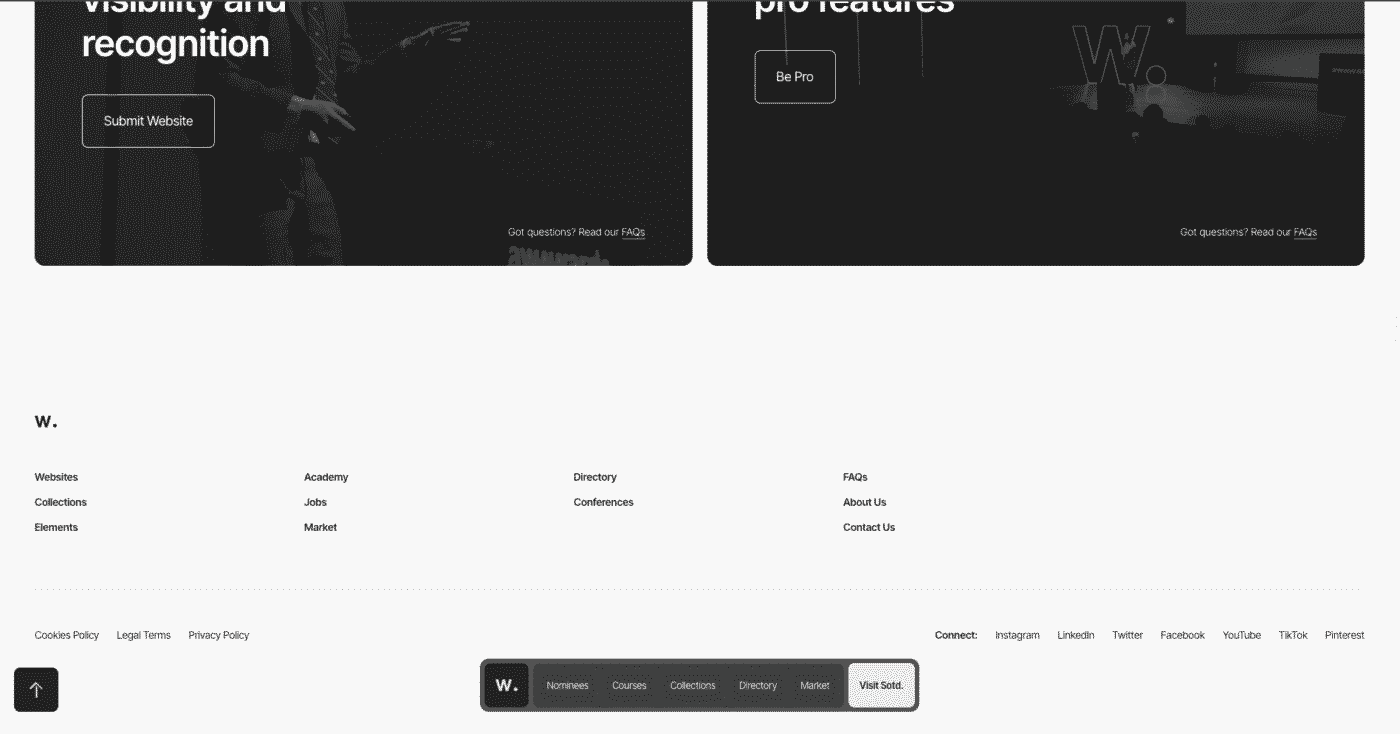
Award-winning footer example with inspirational design trends and functional navigation | Source: Awwwards
Awwwards’ footer perfectly combines sleek elegance with practical functionality. It uses a minimalist layout with ample white space, allowing important links such as resources, directories, and FAQs to stand out clearly. By grouping navigation into logical clusters, users can access other essential sections without clutter.
Also Read : What Makes a Good Website? 10 Essential Elements for Success
Elevating Your Web Design Footer
An effective web design footer organizes content without overwhelming the user. Whether sleek, playful, or minimal, the best footers balance structure, aesthetics, and function.
A footer isn’t just the last section; it plays a vital role in navigation and trust. These examples show how thoughtful design can turn a basic section into a strategic advantage. Keep experimenting with layout, hierarchy, and visual balance to create a footer that truly complements the user experience.Typography remains essential for achieving balance and clarity in footer layouts. To give your footer design more impact, start with the Bold Brush Fonts Collection, then explore premium typefaces at Letterara Studio for professional, modern typography.

